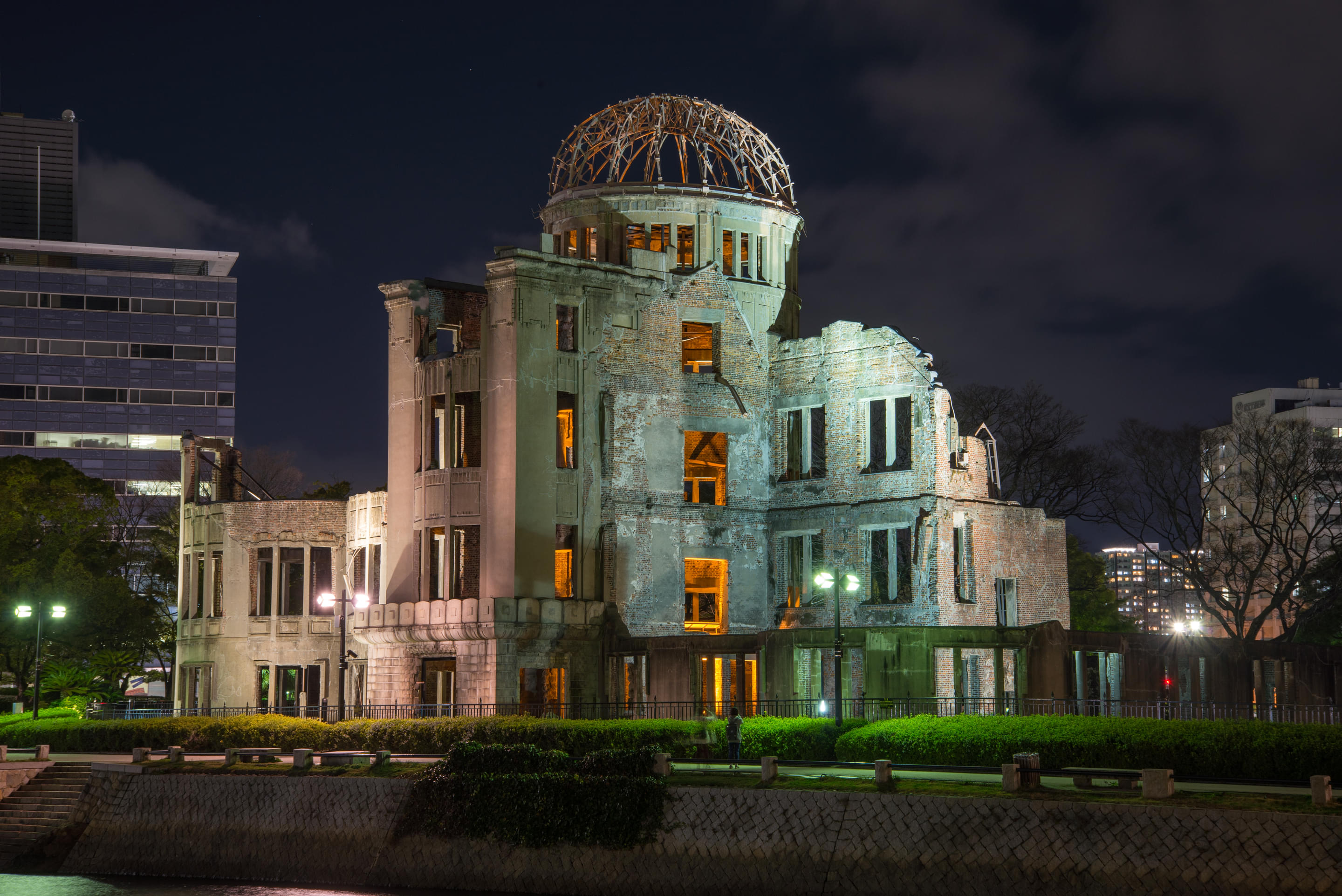The Atomic Bomb Dome or Hiroshima Peace Memorial, stands as a poignant symbol of peace. It is a reminder of the devastation caused by the atomic bomb dropped on Hiroshima on August 6, 1945. Originally it was the Hiroshima Prefectural Industrial Promotion Hall.
In 1996, it was designated as a UNESCO World Heritage Site. The Dome preserves the ruins as they were post-bombing to promote global peace and the abolition of nuclear weapons. The site attracts millions of visitors annually, visiting here under the impact of nuclear warfare and honouring the memory of the victims.
The Hiroshima Peace Memorial Park is surrounded by prominent monuments and museums. These compliments the dome, creating a scenic environment for all travellers to find peace and reconciliation.
Highlights
• Explore the Atomic Bomb Dome, a UNESCO World Heritage site known for its architectural beauty.
• Stroll through the mesmerising Peace Memorial Park and museum offering comprehensive educational programs.
• Experience the beauty of the Dome at night when it is illuminated, offering a poignant, reflective atmosphere.
• Explore the park located surrounding the dome featuring museums, and exhibits dedicated to peace.
• Participate in reflection and remembrance activities, such as folding origami cranes.
How To Reach
- By Car: The Atomic Bomb Dome is located 1.5 km from the Hiroshima city centre. It will take around 7 minutes to reach your destination via the Koijo Street route.
- By Foot: Atomic Bomb Dome is located 1.3 km from the Hiroshima city centre. It will take around 19 minutes to reach your destination via the Koijo Street route.
Best Time To Visit
The Atomic Bomb Dome remains open throughout the year.
- Best Season: Head to the Atomic Bomb Dome during winter for a wholesome experience.
- The Best Day in The Week: Saturdays and Sundays are ideal days to explore the Atomic Bomb Dome.
- The Best Time of The Day: The best time of the day is when you can visit the Atomic Bomb Dome at any time of the day. However, mornings are a great time to explore this place.
Other Essential Information
- Avoid pointy heels when visiting the atomic bomb dome to remain comfortable.
- Drink plenty of water to remain hydrated.
- Carry essentials like sunscreen, a hat, and other things to protect yourself from the sun.
- Wear lightweight and breathable clothes.
- Keep the environment clean around you.
Learn About the Historical Significance and Architecture
The Atomic Bomb Dome, originally the Hiroshima Prefectural Industrial Promotion Hall, was designed by Czech architect Jan Letzel and completed in 1915. The building's original purpose was to promote Hiroshima’s burgeoning industries. On August 6, 1945, the atomic bomb exploded approximately 600 metres above and 160 metres southeast of the building. It instantly killed those inside the dome, creating a devastating situation within the city. The Dome was one of the few structures near the hypocenter which was not destroyed completely. However, only its skeletal frame and parts of its walls remain intact. This resilience has made the Dome an enduring symbol of the devastation wrought by the atomic bomb and the resilience of the human spirit.
Explore the UNESCO World Heritage Site
In 1996, the Atomic Bomb Dome was designated a UNESCO World Heritage Site. It stands as a global symbol of peace and a stark reminder of the horrors of nuclear warfare. The designation underscores the site's value not only to Japan but to humanity as a whole. The preservation of the Dome in its post-war condition aims to convey the destruction caused by the bomb. As a World Heritage Site, it draws international visitors, educators, and policymakers. This makes it a globally popular site.
Head Towards the Hiroshima Peace Memorial Park
The Atomic Bomb Dome is located within Hiroshima Peace Memorial Park. It is a sprawling area dedicated to the memory of the bomb's victims and the promotion of peace. The park features numerous monuments, memorials, and museums, each contributing to the narrative of Hiroshima's tragic past and hopeful future. Key sites include the Cenotaph for the A-bomb Victims, which holds the names of all known victims. Another one is the Peace Flame, which will burn until all nuclear weapons are abolished. The park’s design and layout encourage reflection, making it a serene space for visitors.
Get Insights into the Peace Memorial Museum
Adjacent to the Atomic Bomb Dome, the Hiroshima Peace Memorial Museum provides an exploration of the events leading up to the bombing. It also explains the immediate aftermath, and the long-term effects on the city and its inhabitants. The museum's exhibits include photographs, artefacts, survivor testimonies, and detailed information about the bomb's impact on human health and the environment. Personal belongings of the victims, such as charred clothing and melted objects, offer a deeply personal connection to the tragedy.

